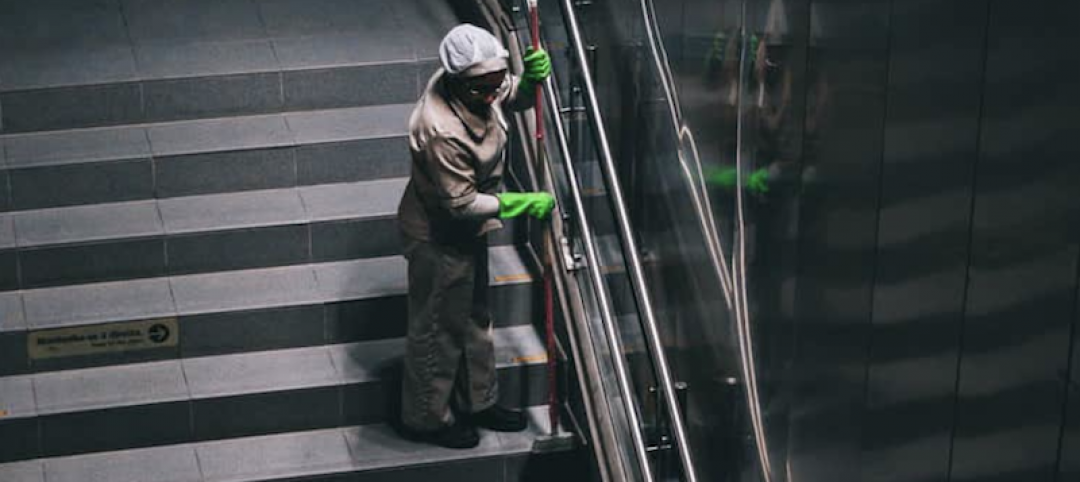The United States has been through various stages of shutdowns and social distancing practices in response to the COVID-19 pandemic. At present, our cities and economy are stutter-stepping into the new normal, trying to re-open without causing more harm than we can handle. Simultaneously, the CDC, WHO, and local health departments have all released recommendations to mitigate the risk of exposure to COVID-19. Infrastructural changes are already happening, and as the summer goes on, businesses are kick-starting the process of re-opening. With so much happening at once, news has been coming at us in real-time, making it hard for businesses and building operators to prepare effective re-opening strategies. This is what the International WELL Building Institute (IWBI) and United States Green Building Council (USGBC) are seeking to resolve.
In an effort to address the risks of COVID-19 at the building scale, USGBC and IWBI have analyzed existing certification guidelines and drafted new, relevant content. With the WELL Health Safety Rating and LEED Safety First Pilot Credits, business and building owners/operators can critically assess return-to-work policies to foster uniformity and safety for all those returning to their workplace environments.

WELL HEALTH SAFETY RATING
IWBI’s new criteria include sub-sections for each aspect of the building enclosure in relation to COVID-19 risk mitigation. IWBI has assessed:
- Cleaning and Sanitization Procedures
- Emergency Preparedness Programs
- Health Service Resources
- Air and Water Quality Management
- Stakeholder Communication
Additionally, IWBI’s Taskforce has included an Innovation section, due to the ongoing nature of its research. This allows project teams to propose new, relevant measures to further the scope and granularity of the standard. IWBI has designed this program for a range of project sizes and types, backed by the annual verification of GBCI. If you are interested in pricing, you can find it here.
LEED SAFETY FIRST PILOT CREDITS
USGBC’s COVID-19 Resources page includes links to four new pilot credits focused on indoor air and water quality management for projects preparing to re-enter their workspace. Each pilot credit can be achieved for LEED 2009, v4, and v4.1 projects, and have varying applicability dependent on project type. For registered projects including those in pursuit of LEED O&M certification via Arc, the USGBC has published a set of free tools called Arc Re-entry. These low-cost tools are intended to aid facilities maintenance managers to track infection control, monitor indoor air quality, and understand occupancy experience through informative, real-time graphics. Registration through Arc is currently free, including for this Re-entry Program.
BENEFITS OF A COVID RATING
Both programs may be used as a path towards smarter, calculated re-opening that prioritizes the health and safety of occupants. These certifications add value for tenants, especially those that expect their building operators to respond to COVID-19. Like other certifications, a WELL Health Safety Rating and/or LEED Safety First pilot credits demonstrate thoughtful and measurable action to mitigate risk. They can also be used as a tool for tenants to decide where to work, study, and live.
Think back to a time before certifications like LEED, BREEAM, and Living Building Challenge. The real estate industry struggled to define or quantify sustainable design, and any framework around green building was often ill-defined. In short, it was hard to measure achievement, let alone scale for various project types. We’ve since learned that having a codified system helps us to understand the scale of identified issues and develop best practices. Similarly, International WELL Building Institute (IWBI) and USGBC have stepped out as leaders in working to codify wellness during the COVID back-to-work period.
NEXT STEPS
Both IWBI and USGBC are actively accepting project registrations. Paladino will provide rolling updates, including programmatic requirements and certification timelines as they are made available. If you are interested in pursuing either program, please contact us and we can guide you through the process, including determining which rating system is the best fit for your property.
More from Author
Paladino | Jan 10, 2022
The future of regenerative building is performance-based
Why measuring performance results is so critical, but also easier said than done.
Paladino | May 26, 2021
Injecting embodied carbon capability into the integrated design and construction process
Embodied carbon is defined as the carbon footprint of a material, and is expressed in metric tons of CO2e.
Paladino | May 12, 2021
Climate modeling for a resilient business and future
This post explores changes that developers and their teams need to make to their risk and resilience strategies by climate modeling for climate change.
Paladino | Apr 26, 2021
Building performance requirements are coming: Are you ready?
Building Performance Requirements are trending nationwide and are likely coming to a county near you.
Paladino | Feb 8, 2021
Six lessons learned from our first Fitwel Viral Response Module certification
The Fitwel Viral Response Module is one of several frameworks that real estate owners and operators can use to obtain third-party certification for their efforts ensuring their properties are ready for a safer and healthier return to work.
Paladino | Jan 14, 2021
Shift your energy to carbon
Now is the right and necessary time for the commercial real estate industry to shift its environmental strategy from just energy, a carbon contributor, to carbon itself.
Paladino | Nov 13, 2020
5 tips when designing for daylight
Daylight modeling is a tool to examine how daylight interacts with a building, and how that natural light behaves within interior spaces.
Paladino | Jun 5, 2020
3 strategies to improve the wellness of building systems and gain tenant trust
Three operational issues that must be prioritized for every building in order to achieve tenant trust are air quality/ventilation, relative humidity, and building commissioning.
Paladino | Apr 1, 2020
Green cleaning and the coronavirus
If your cleaning teams use bleach to disinfect buildings from Coronavirus, will you put your LEED certification at risk?


















